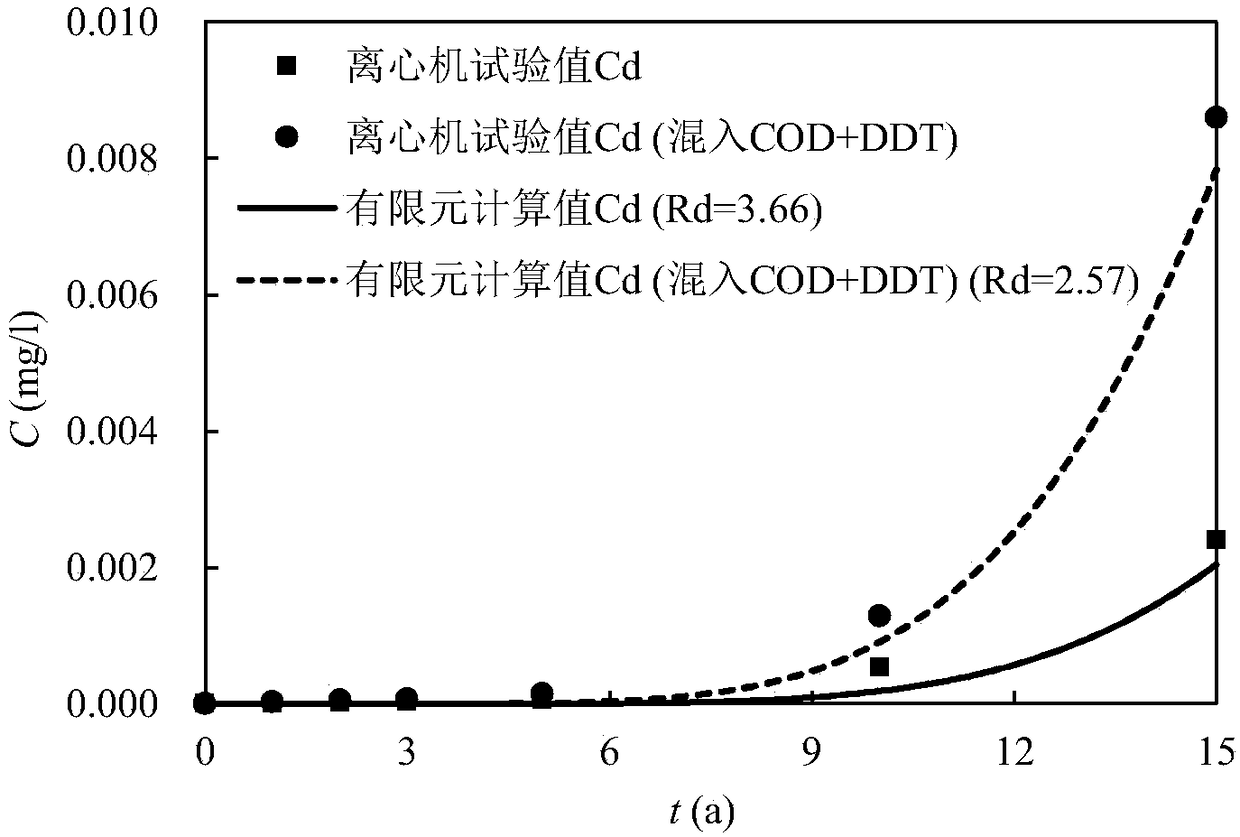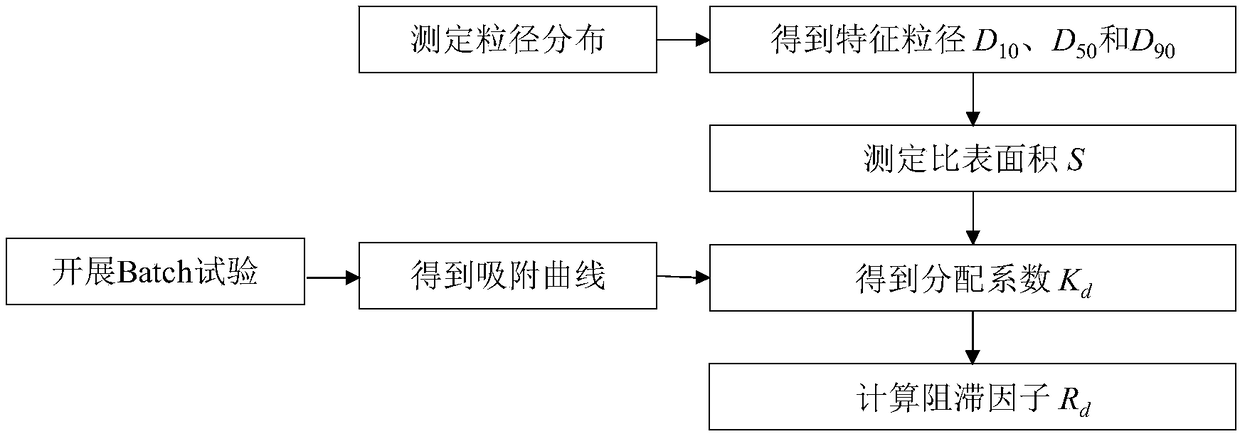Method for estimating formation adsorption retardation factor
A technology of retardation factor and formation, applied in the direction of measuring devices, suspension and porous material analysis, instruments, etc., to achieve the effect of good practicability and low cost
- Summary
- Abstract
- Description
- Claims
- Application Information
AI Technical Summary
Problems solved by technology
Method used
Image
Examples
Embodiment Construction
[0050] The present invention will be further described below in conjunction with the accompanying drawings and specific embodiments.
[0051] Such as figure 2 As shown, a calculation method of formation adsorption retardation factor, which includes the following steps:
[0052] 1) According to the industry standard "Soil Engineering Test Regulations" SL237-1999, the formation soil material is sampled, and the particle size distribution is measured to obtain the characteristic particle size D 10 (μm), D 50 (μm) and D 90 (μm); D 10 (μm), D 50 (μm) and D 90(μm) means that the mass of soil particles smaller than this particle size accounts for 10%, 50% and 90% of the total soil mass. Particle size distribution can be measured by sieve analysis method, density meter method, pipette method and laser particle size analyzer test method;
[0053] 2) Measure the particle specific surface area S (m 2 / g); The determination of particle specific surface area can be selected volume...
PUM
 Login to View More
Login to View More Abstract
Description
Claims
Application Information
 Login to View More
Login to View More - R&D
- Intellectual Property
- Life Sciences
- Materials
- Tech Scout
- Unparalleled Data Quality
- Higher Quality Content
- 60% Fewer Hallucinations
Browse by: Latest US Patents, China's latest patents, Technical Efficacy Thesaurus, Application Domain, Technology Topic, Popular Technical Reports.
© 2025 PatSnap. All rights reserved.Legal|Privacy policy|Modern Slavery Act Transparency Statement|Sitemap|About US| Contact US: help@patsnap.com



